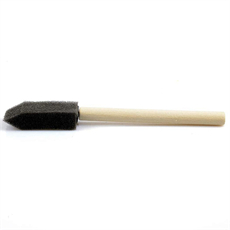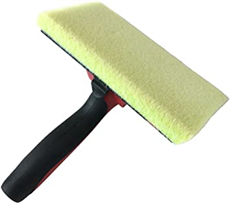Certainly! Let’s brush up on various types of paintbrushes and their characteristics:
- Round Brushes:
- Shape: These brushes have a round, pointed tip.
- Usage: Ideal for creating fine lines, details, and precise strokes. They are versatile and suitable for various painting techniques.
- Flat Brushes:
- Shape: Flat brushes have a square edge.
- Usage: Excellent for covering large areas and creating sharp, clean edges. They are commonly used for backgrounds and broad strokes.
- Filbert Brushes:
- Shape: Filbert brushes have a flat, oval-shaped tip.
- Usage: Versatile for both precise lines and soft blending. Useful for a wide range of painting styles and mediums.
- Fan Brushes:
- Shape: Fan brushes have spread-out bristles in a fan shape.
- Usage: Great for creating textures, blending, and special effects like foliage, clouds, and hair. Commonly used in oil and acrylic painting.
- Detail Brushes:
- Shape: Extra-fine brushes designed for intricate work and fine details.
- Usage: Essential for adding fine details to your artwork. Available in various shapes, such as liners and spotter brushes.
- Angle Brushes:
- Shape: Angle brushes have bristles cut at an angle.
- Usage: Suitable for making precise lines and angled strokes. Often used for outlining, shading, and adding details.
- Script Liner Brushes:
- Shape: Long, fine bristles that hold a lot of paint.
- Usage: Ideal for creating long, flowing lines, calligraphy, and fine details. Commonly used in oil and acrylic painting.
- Palette Knives:
- Shape: Not brushes, but essential tools for mixing paint on a palette and applying paint directly to the canvas.
- Usage: Especially important for impasto techniques and creating textured effects.
- Mop Brushes:
- Shape: Mop brushes have soft, rounded bristles.
- Usage: Used for blending and applying washes of color, particularly in watercolor painting. They create gradients and soft edges effectively.
- Hake Brushes:
- Shape: Wide, flat brushes with soft bristles.
- Usage: Perfect for applying large washes of color in watercolor painting. Can also be used for varnishing or glazing in acrylic and oil painting.
- Detailing Rigger Brushes:
- Shape: Long, thin bristles.
- Usage: Used for painting fine lines and details, such as rigging on ships or branches on trees. Suitable for watercolor, acrylic, and oil painting.
- Stippling Brushes:
- Shape: Used to create textured effects by applying paint in a series of dots or short strokes.
- Usage: Suitable for adding texture to your artwork in acrylic and oil painting.
These are some of the most common types of paintbrushes, each with its unique shape and purpose. The choice of brush depends on your artistic style, the painting medium you use, and the specific techniques you want to achieve in your artwork. Experimenting with different brush types will help you discover their capabilities and enhance your painting skills.












